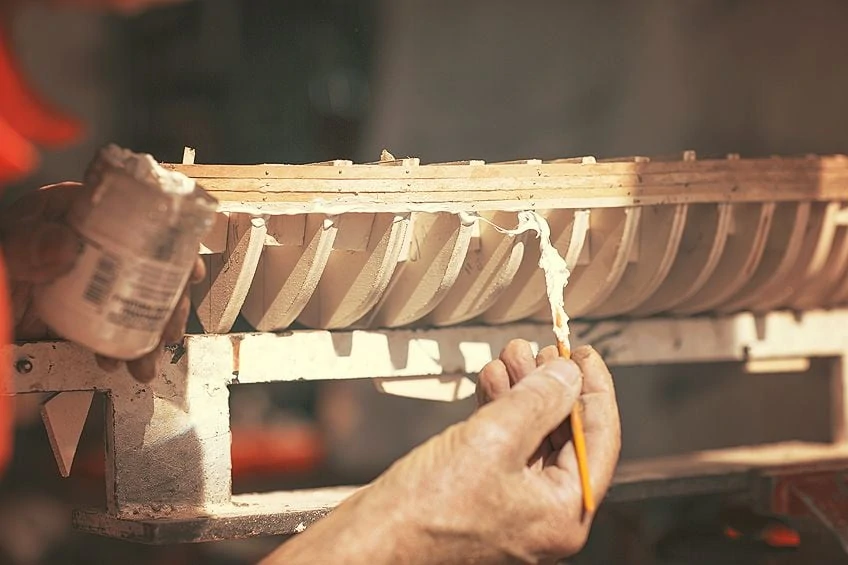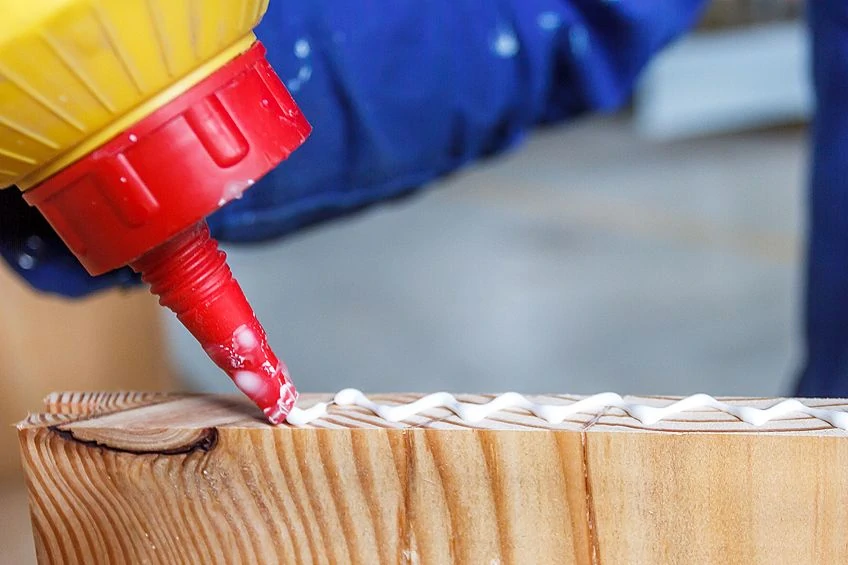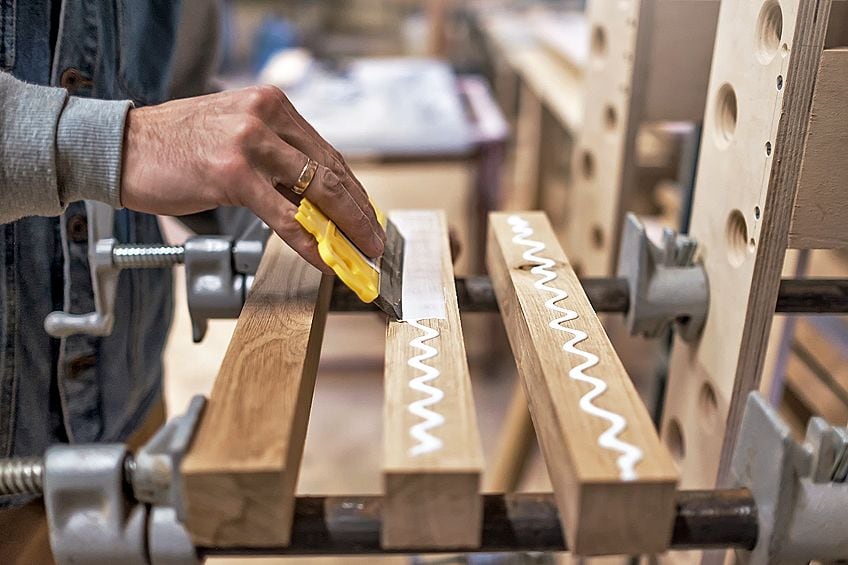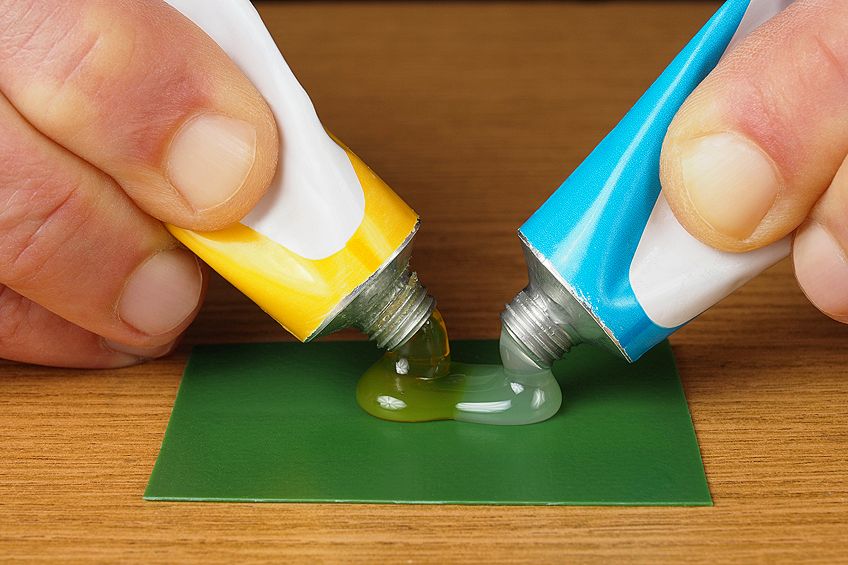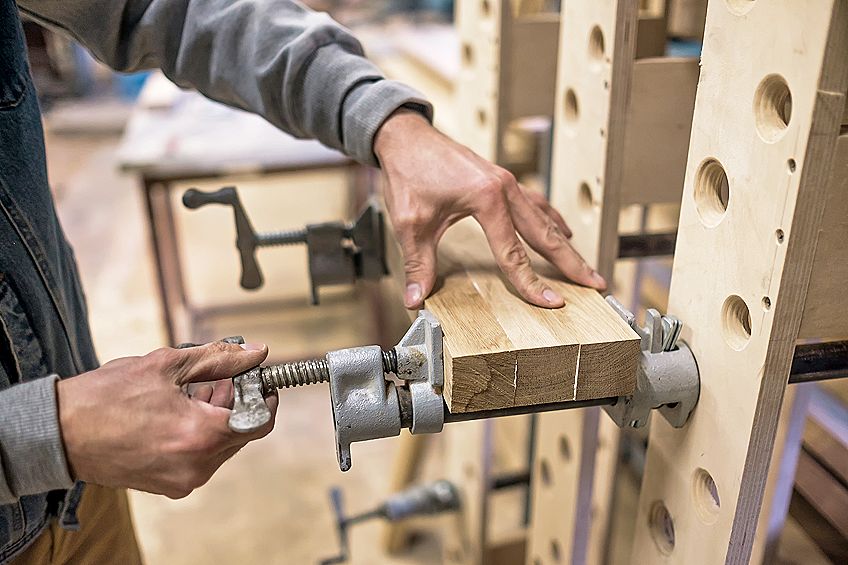How Long Does Wood Glue Take to Dry? – Full Guide
This post may contain affiliate links. We may earn a small commission from purchases made through them, at no additional cost to you. You help to support resin-expert.com
The general rule of thumb in woodworking circles is to leave wood glue to dry for 24 hours before removing the clamps. While a 24-hour curing time is usually overkill, this is no reason to rush and remove the clamps. Multiple factors contribute to the time it takes for the glue to dry, from the surrounding climate to the type of wood and the type of glue being used. This article aims to increase your understanding of these factors so that you can get on with your project as soon as possible without things falling apart.
Table of Contents
Wood Glue Dry Time, Cure Time, and External Influencing Factors
The words “dry” and “cure” seem to be used interchangeably. Although this may sometimes be the case, they do not refer to the same thing. When the wood glue is dry, this means that you can remove the clamps as it will hold without their aid, but it has yet to fully cure. When the glue has cured, this means that it has reached the state where its bond is at its strongest. Drying time can take as little as 30 minutes, whereas curing time can take a lot longer. However, as mentioned, there are other factors at play here.
Climate and Temperature
The drying process will vary from one glue to another. PVA glue, for instance, dries through the process of dehydration. During the drying time, the moisture in the glue evaporates into the air. If the glue is in a humid environment, it will take longer to dry as there is more excess moisture in the air, thus slowing down the evaporation.
Most PVA glues will have instructions for how long to leave the glue to dry. If you are working in a humid environment or if it is raining, it is best to increase the recommended drying and curing times respectively.
Temperature is another contributing factor to how long wood glue takes to dry. The colder the temperature, the longer the glue will take to dry. Generally speaking, the minimum temperature for a glue to dry is between 50 and 60 degrees Fahrenheit (10 and 15.5 degrees Celsius), but the ideal temperature is between 70 and 80 degrees Fahrenheit (21 and 26.6 degrees Celsius).
Wood
The moisture content in the wood can also contribute to the length of time it takes for wood glue to dry. The drying time for glue applied to dry wood will be much less than that of wood with a higher moisture content. This is because dry wood draws moisture out of the wood glue, which accelerates the time it takes for the glue to dry.
The wood type will also influence how long it takes for wood glue to dry. If the wood you are gluing is very porous, it will absorb a lot of the glue and you will be forced to use more, which will take longer to dry. Thus, denser wood will need less glue, which will therefore dry more quickly.
It is important to note that some woods have a high acid content, such as walnut, mahogany, cherry, and oak. These woods bond poorly with certain glues, such as epoxies.
Types of Wood Glues
One of the main factors that influence drying time is the type of glue that is used. There are a lot of options available when it comes to wood glue. All of them promise an array of competing advantages, and most of them deliver. From polyvinyl to polyurethane and glue made from animal hide, let us take a look at some of the different types of wood glues available to us.
Polyvinyl Acetate Wood Glue
Polyvinyl Acetate glue, or PVA, is by far the most common type of wood glue. Modern PVA glues are extremely strong and in some cases stronger than the wood itself. PVA glue is widely available and can be inexpensive, as it is often used as white glue in crafts. Almost all PVA glues are water-resistant once cured.
There are many PVA glue brands on the market, and they are not all created equally, so be sure to purchase one that is specifically designed for use on wood. A good-quality PVA glue can last for years to come, will give off no toxic fumes, and is easily applied with a brush or straight from the bottle’s nozzle.
Polyurethane Glue
Polyurethane glue is not water-based, which means that it has higher levels of volatile organic compounds (VOCs), which are toxic fumes released by the glue in its liquid state. This glue is ideal for joinery and porous wood, as it does not saturate the wood like water-based glues, which can cause the wood to swell.
Unlike PVA glue, polyurethane starts to dry when the glue interacts with moisture in the air as well as the wood. It is for this reason that polyurethane glue is great for gluing wood with a high water content. The downside to polyurethane glue, however, is that it can take a long time to cure.
Epoxy Glue
Epoxy glues are ideal for filling in gaps as well as for bonding, as they do not shrink once dry. Epoxy requires you to mix two substances, being a resin and a hardener. It is the mixing of these two substances that creates the chemical reaction that starts the drying process.
The drying and curing times vary greatly; there are quick-setting epoxies and there are epoxies that take much longer to dry and to full cure. Generally, the longer an epoxy takes to cure, the stronger it is. Epoxy glues may not be effective on certain woods that have a high acid content, however, such as oak, walnut, and cherry.
Cyanoacrylate
Cyanoacrylate, better known as superglue, is fast-drying and bonds well to wood. However, once dry, the structure itself is not nearly as strong as epoxy or PVA glue. Thus, this glue is ideal for repairing small chips in wood and gluing inlays. It can also be used as a temporary hold for when you are using wedges to help with clamping. Superglue can also be mixed with sawdust to make a great crack filler. Cyanoacrylates dry by drawing in moisture from the air, and in doing so, they create a strong mesh-like bond. This can happen within a few minutes or seconds.
Hide Glue
Hide glue is also referred to as animal glue and has been used for thousands of years, remaining a favored adhesive among woodworkers of all ages. Hide glue comes in a crystalline form that requires heating to liquefy it, although it also comes bottled in liquid form. Hide glue can work out to be much cheaper than synthetic glues and is also non-toxic and biodegradable. Once cured, animal hide glue can be just as strong as its more contemporary PVA counterpart.
| Type of Glue | Average Drying Time | Average Curing Time |
| Polyvinyl Acetate Wood Glue | 30 minutes – 1 hour | 18 – 24 hours |
| Polyurethane Glue | 1 – 2 hours | 24 hours |
| Epoxy | 30 minutes – 1 hour | 12 – 74 hours |
| Cyanoacrylate | 10 seconds – 10 minutes | 24 hours |
| Hide | 1 – 3 hours | 12 – 24 hours |
Tips and Tricks
- It is easy to clean up excess PVA wood glue from your project before it has dried by using a sponge or a rag soaked in warm water.
- Once you have applied the glue, rub the two surfaces together before clamping your project. This will ensure an even spread and better adhesion.
- When clamping your project, do not over-tighten. If your project looks misshapen or bent, the clamps may be too tight. Over-tightening can also squeeze out all the glue, leaving nothing to bond the wood together. Just make sure that the two surfaces are no more than snug.
Mix wood glue and sawdust from your project for a wood filler that matches your wood perfectly. This is an ideal trick to do with PVA wood glues.
- When clamping wood and using epoxy, it is important to note that epoxy will require much less pressure than PVA or hide glue, as the epoxy does not shrink when it dries.
- Clamps can create dark marks on your project, especially if glue gets between the wood and the clamps. To prevent this from happening, lay wax wrap between the clamps and the project. This will also prevent excess glue from drying onto your clamps and making a mess.
- When gluing large surface areas, a notched trowel can help you get an even spread of the glue instead of having large, uneven splashes. This even spread will also make for a stronger bond.
Frequently Asked Questions
How Long Does It Take for Wood Glue to Dry?
The time it takes for wood glue to dry varies depending on the brand. It is best to follow the manufacturer’s instructions while also taking into account the type of wood you are using as well as the climate of your particular area. A good rule of thumb is to clamp your project for 24 hours and wait it out.
How Long Can I Keep Wood Glue?
PVA wood glue can last a long time. However, it can still go bad after some time. Before you throw away a bottle of old wood glue, try stirring it with a stick to mix all the particles. If it is still a bit thick, try adding a bit of water to thin it down. If it moves freely and is not grainy, then it is most likely still fine to use.
How Long Should I Leave the Clamps on My Glued Project?
If you are using a strong PVA wood glue, you should leave your project in clamps for 30 minutes to one hour, provided the joints are not stressed. If the joints are going to be under stress, it is best to leave the project in the clamps for 24 hours. Polyurethane glue requires less time in the clamps – the recommended time is roughly 45 minutes. Be sure to take the climate, wood type, as well as the manufacturer’s instructions into consideration.
How Much Wood Glue Should I Use?
If the glue squeezes out from the sides of the joint, this is a good sign that you have enough glue. However, there should only be a thin, consistent bead of glue along the joint – if the glue is dripping everywhere and making a mess, you are probably using too much.
Do I Have to Use Clamps When Gluing Wood?
It is always advised to use clamps when gluing your woodwork. Using clamps ensures a firm bond and prevents your joints from slipping out of place. However, if you are using hot hide glue and rubbing the surfaces together, it is not necessary.


